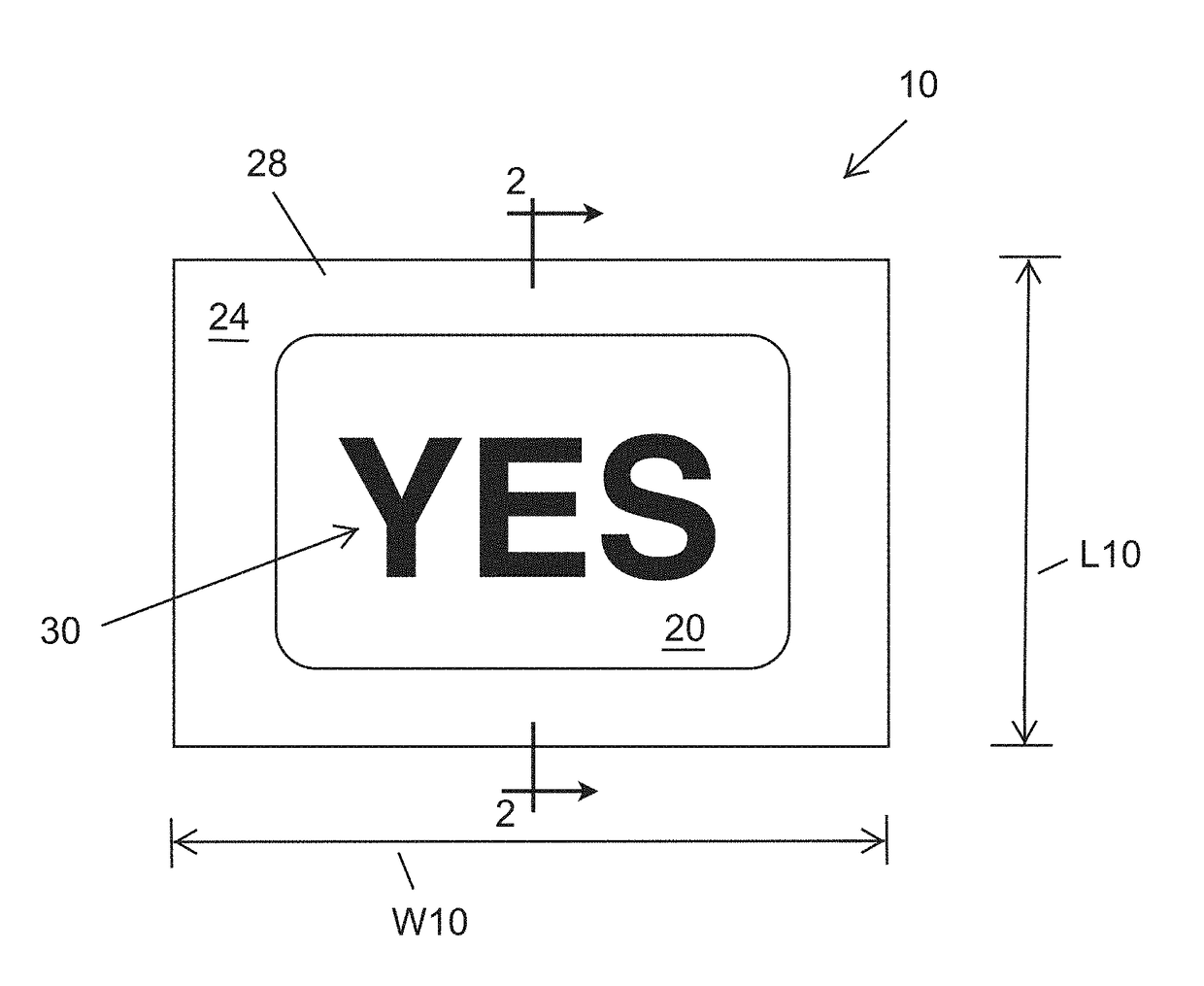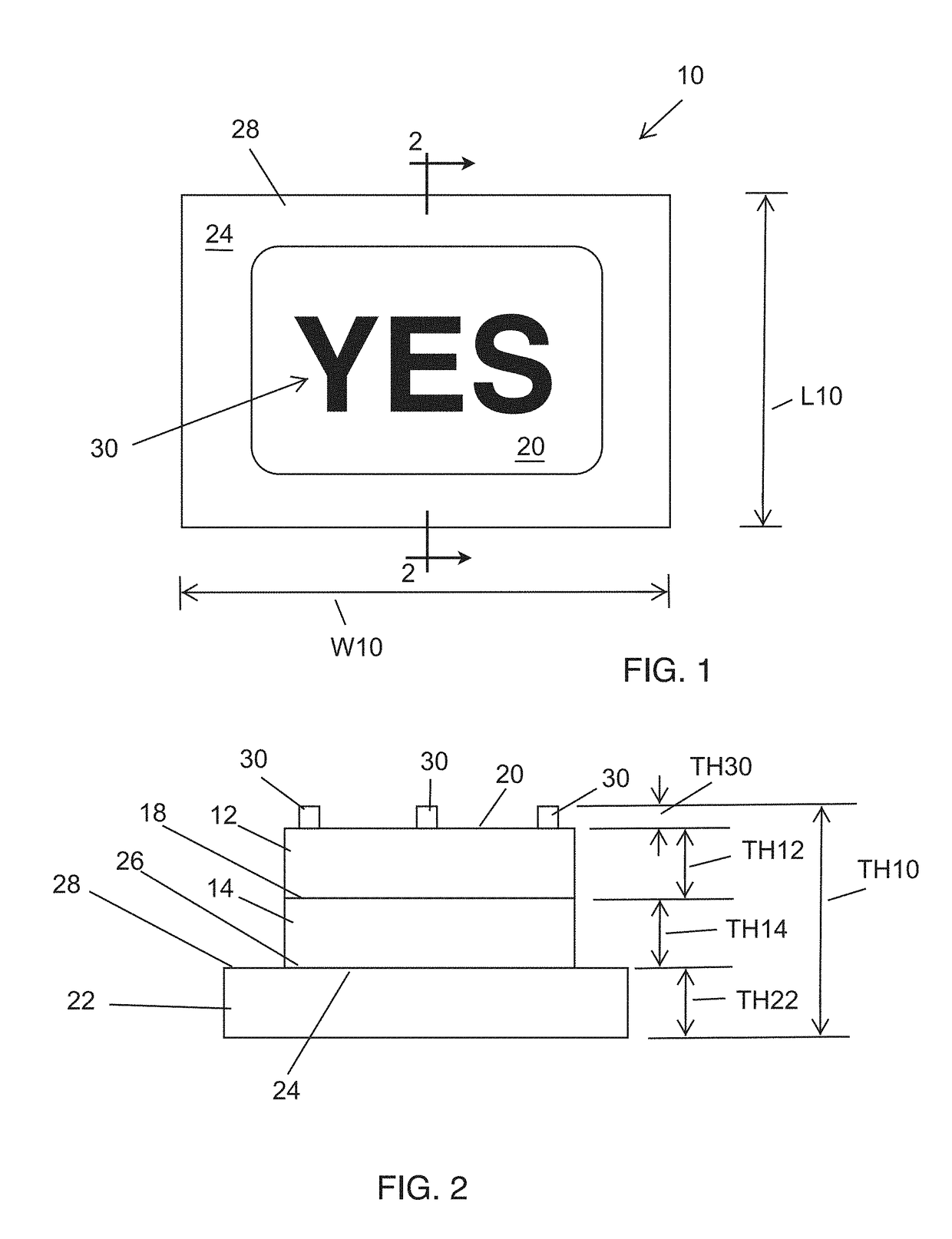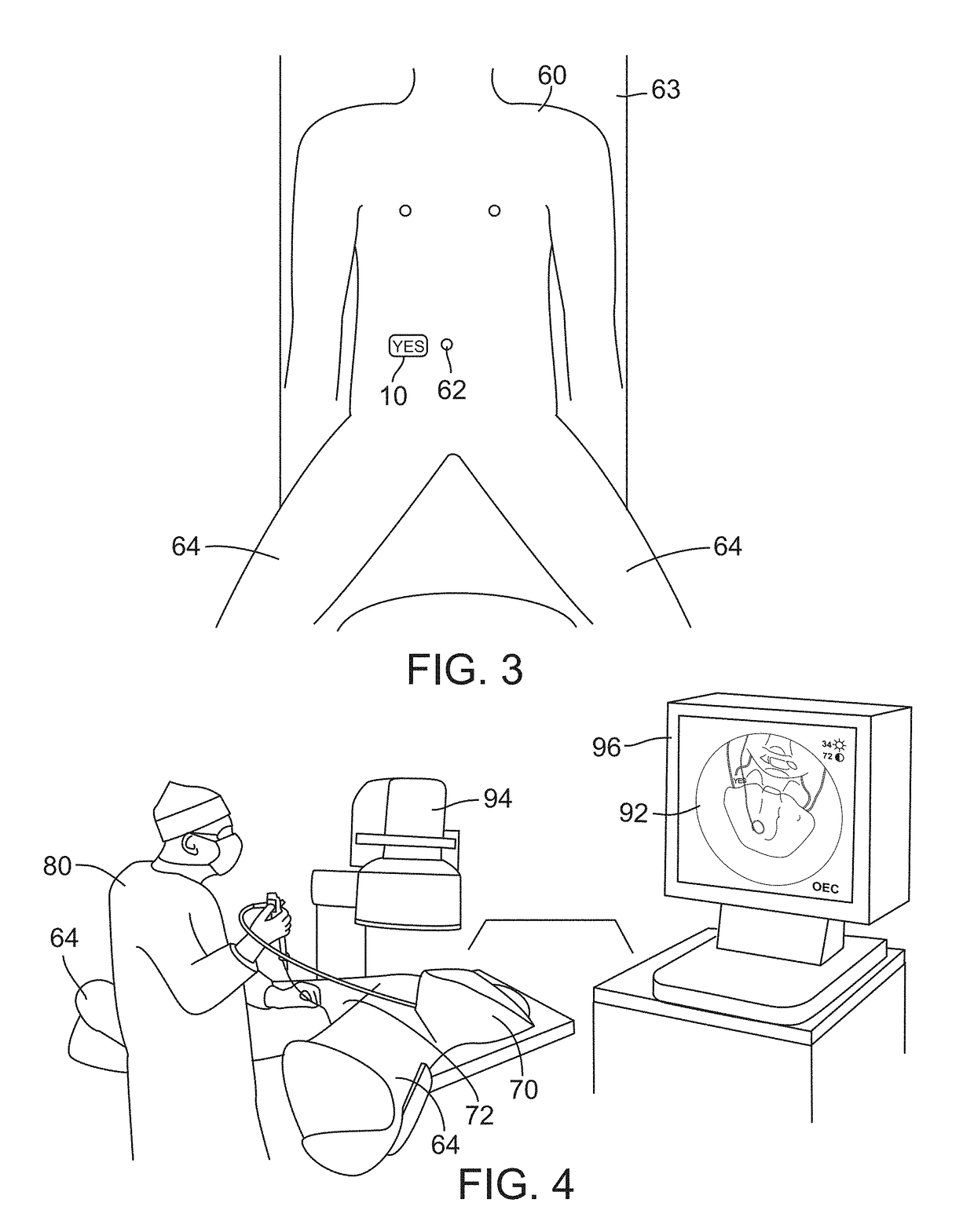Radiopaque Procedure Site Marker and Method for Intraoperative Medical Imaging
a radiopaque procedure and site marker technology, applied in the field of surgical instruments and methods, can solve the problems of no longer visible site marking to the surgeon's eye, and no longer visible site marking
- Summary
- Abstract
- Description
- Claims
- Application Information
AI Technical Summary
Benefits of technology
Problems solved by technology
Method used
Image
Examples
Embodiment Construction
[0046]The invention will now be described with reference to the drawings. The embodiments disclosed herein are to be considered exemplary of the principles of the present invention and various equivalent modifications will be apparent to those skilled in the art based on the teachings herein without departing from the scope or spirit of the invention described in the specification or in the claims.
[0047]The term “marking symbol” is used herein to mean without limitation any desired graphic, character, alpha, numeric and / or alphanumeric combination and in any language that is suitable for use in a manner that would clearly indicate the correct or incorrect site of the surgical procedure. It should also be appreciated that any alpha, numeric, or alphanumeric image, phrase or term may further be configured in any desired font, including without limitation, such fonts as Times New Roman, Courier, Ariel and the like as well as in conjunction with any one or more special effect such as bo...
PUM
 Login to View More
Login to View More Abstract
Description
Claims
Application Information
 Login to View More
Login to View More - R&D
- Intellectual Property
- Life Sciences
- Materials
- Tech Scout
- Unparalleled Data Quality
- Higher Quality Content
- 60% Fewer Hallucinations
Browse by: Latest US Patents, China's latest patents, Technical Efficacy Thesaurus, Application Domain, Technology Topic, Popular Technical Reports.
© 2025 PatSnap. All rights reserved.Legal|Privacy policy|Modern Slavery Act Transparency Statement|Sitemap|About US| Contact US: help@patsnap.com



